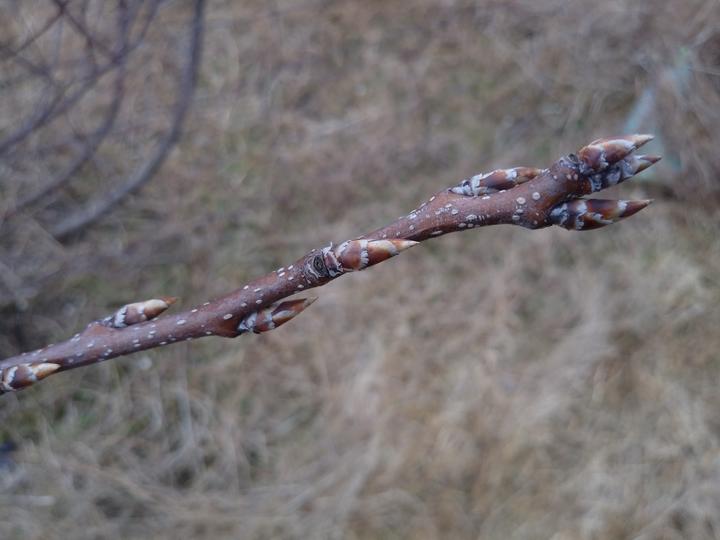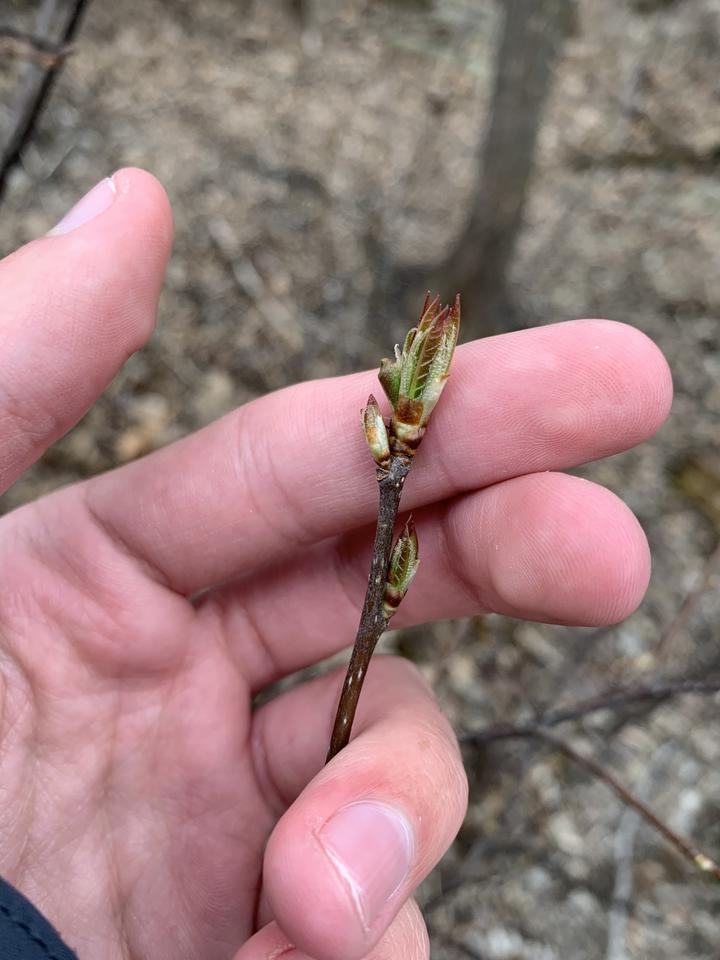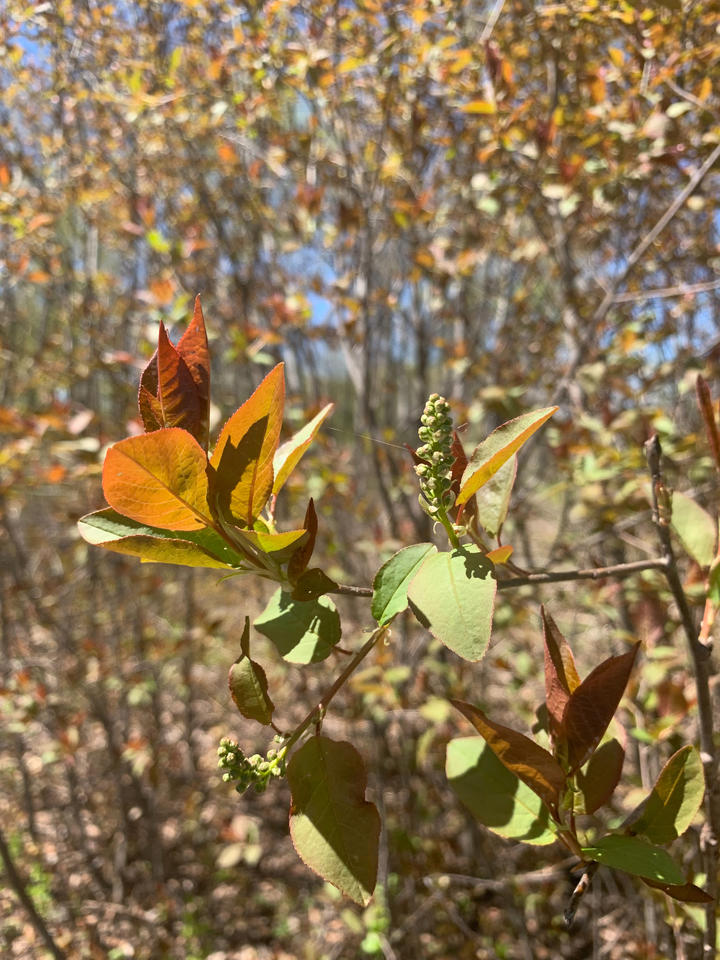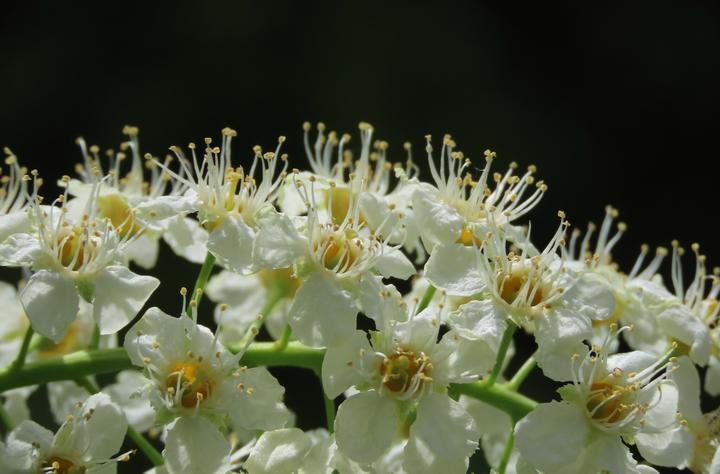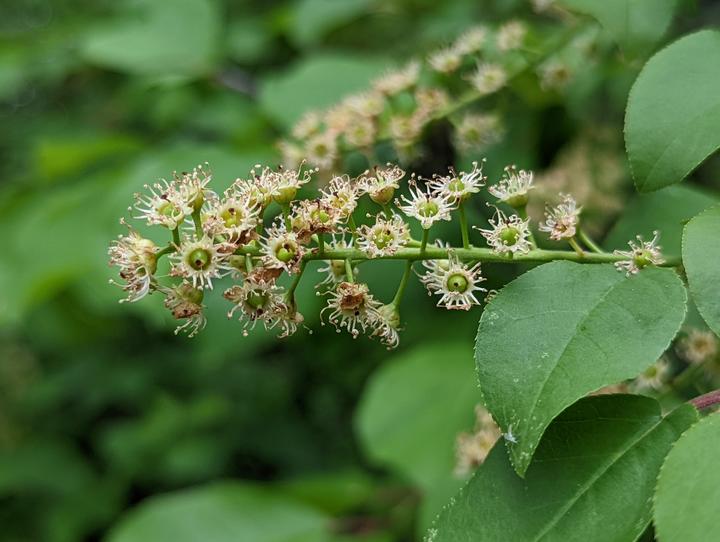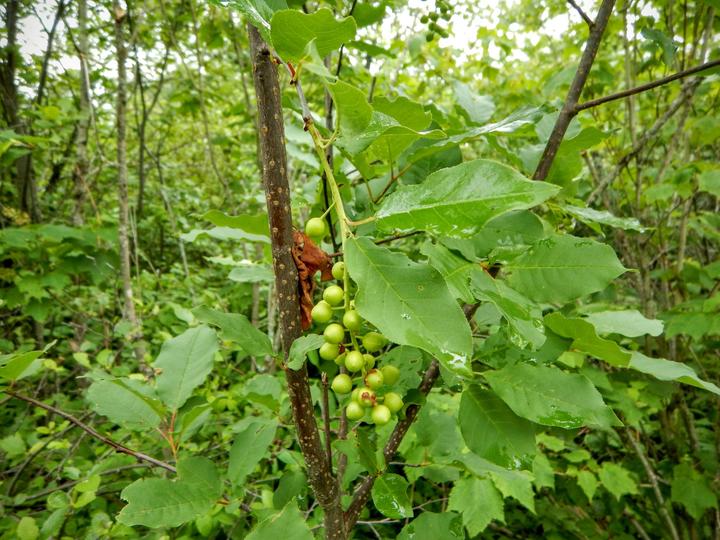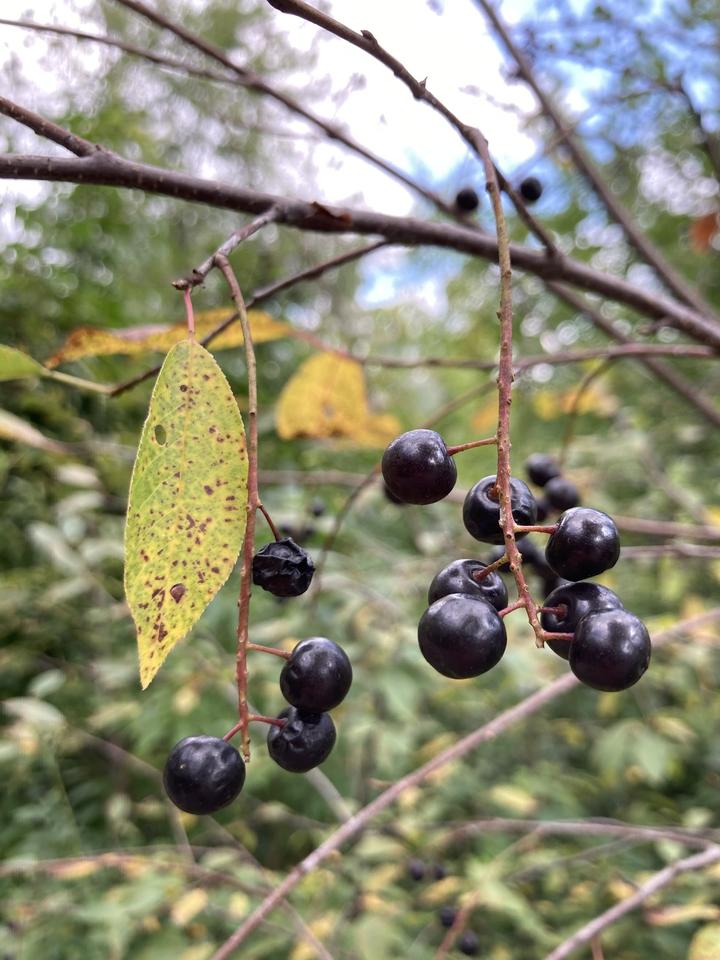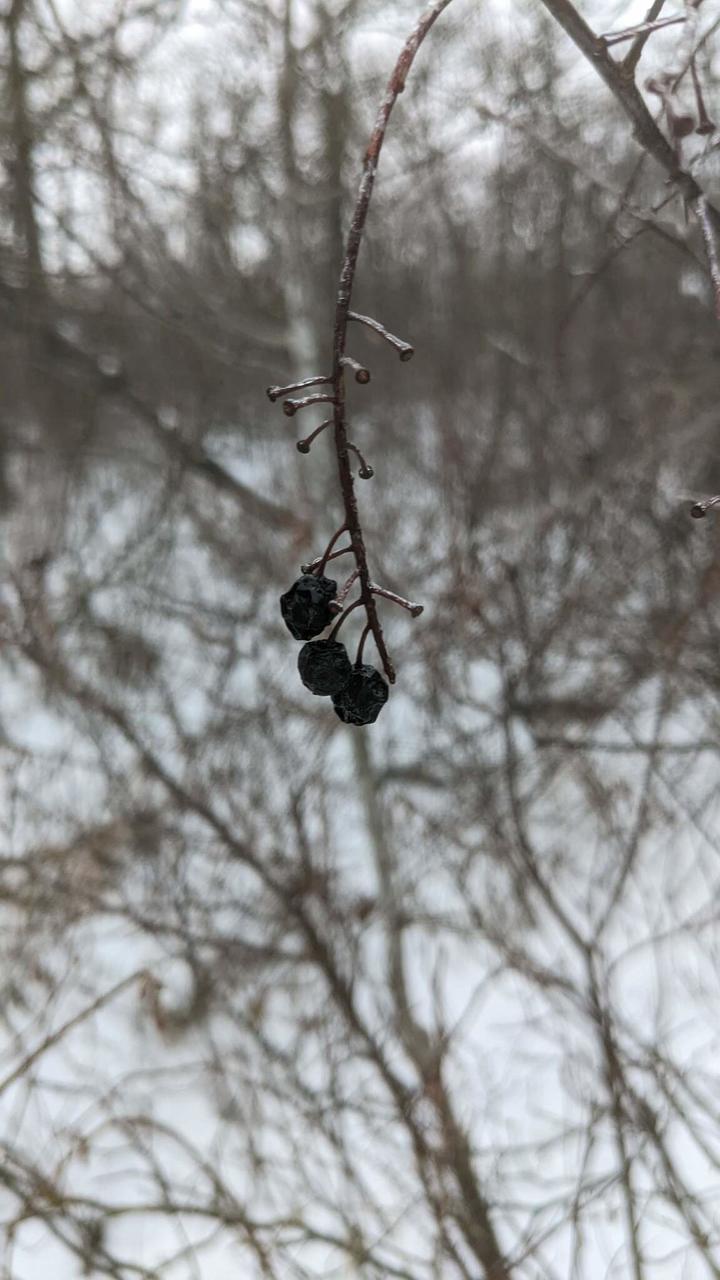More names for this plant
Anishinaabemowin: Azasawemin
Dakota: Çaŋpa
The Dakota and Anishinaabe were among the earliest people to name Minnesota’s plants and animals, as well as to understand them in relation to Minnesota’s climate and seasons. Those original names are still in use, and several are included on the Season Watch website.
Latin (or scientific name): Prunus virginiana
The scientific community has a convention of assigning agreed-upon Latin names to every kind of organism. Using scientific names helps people communicate confidently about the same organism and organize lifeforms based on how closely related they are.
Page contents
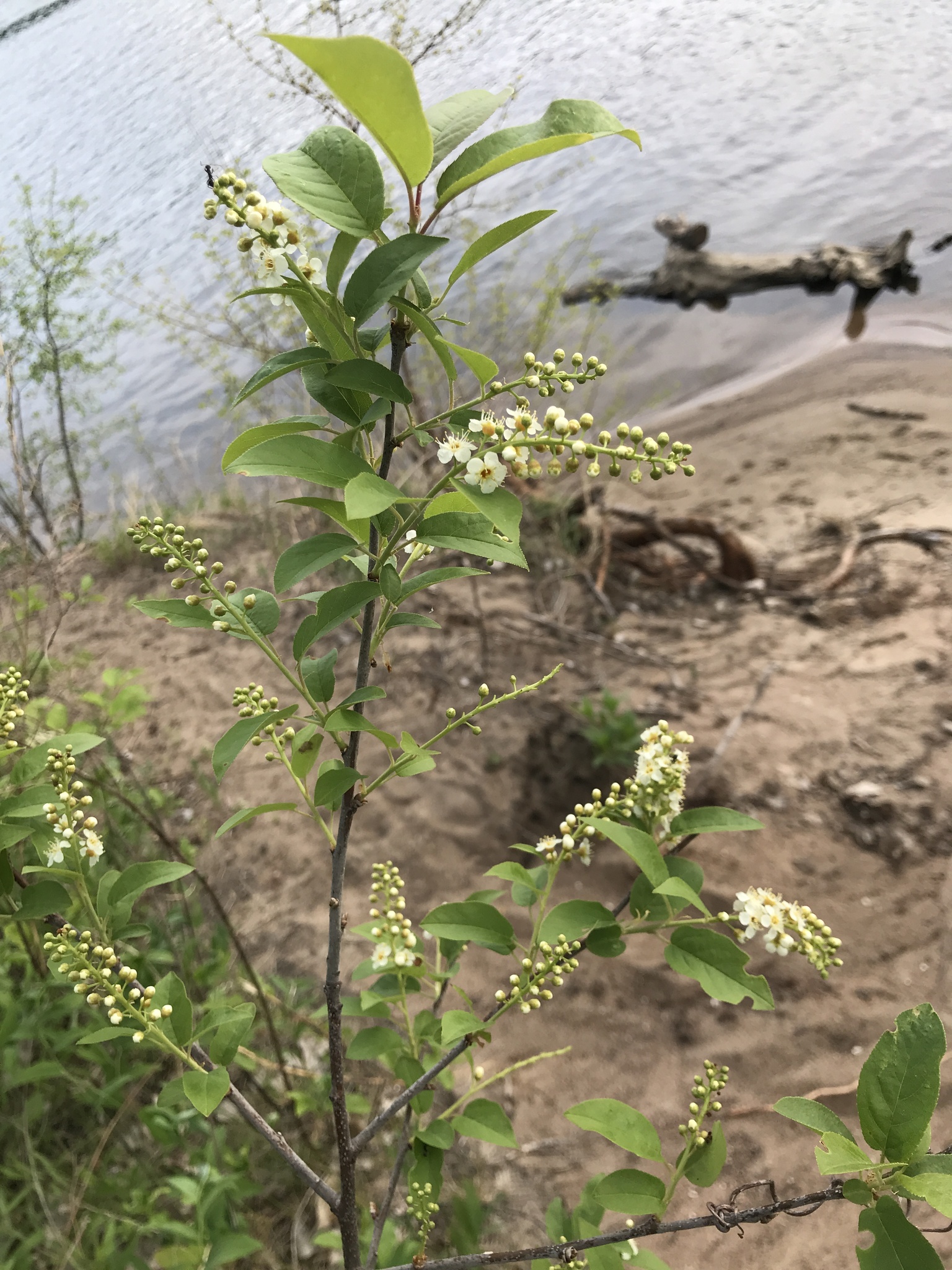
May 16, 2021, Hennepin County, Minnesota
Photo © letaylor1, some rights reserved (CC-BY-NC)
iNaturalist observation
About the chokecherry
- Chokecherries can be found throughout Minnesota.
- These plants are sometimes considered small trees and other times are referred to as woody shrubs.
- They grow up to thirty feet tall, have gray bark, dark red fruits, and elliptical shaped leaves with serrated edges.
- Their white flowers bloom from May to June and attract several types of pollinators.
- Chokecherry fruits are very bitter, so they are not eaten raw. However, they can be used in jams and pies.
- In fall, their leaves change from green to yellow.
- Fun fact: When broken, chokecherry twigs can give off an almond-like smell.
Visual guide to phenology
Watch for the appearance of leaves, flowers, and fruits. Take notice of when flowers open and fruits ripen.
Note to observers
This page explains general clues to watch for when observing chokecherry phenology. However, this page does not explain how to identify this plant or collect data in a standardized way.
- For help with identification, see Minnesota Wildflowers.
- For guidance on collecting data, see Nature’s Notebook.
Graphs and historical data
Note: The Orientation Center provides a map, as well as information on reading graphs; interpreting summary statistics, who collected the data and how; and how to download datasets for independent exploration.
Flowering
- Earliest: May 11 (occurred in 2007)
- Average: May 24
- Latest: June 4 (occurred in 2008)
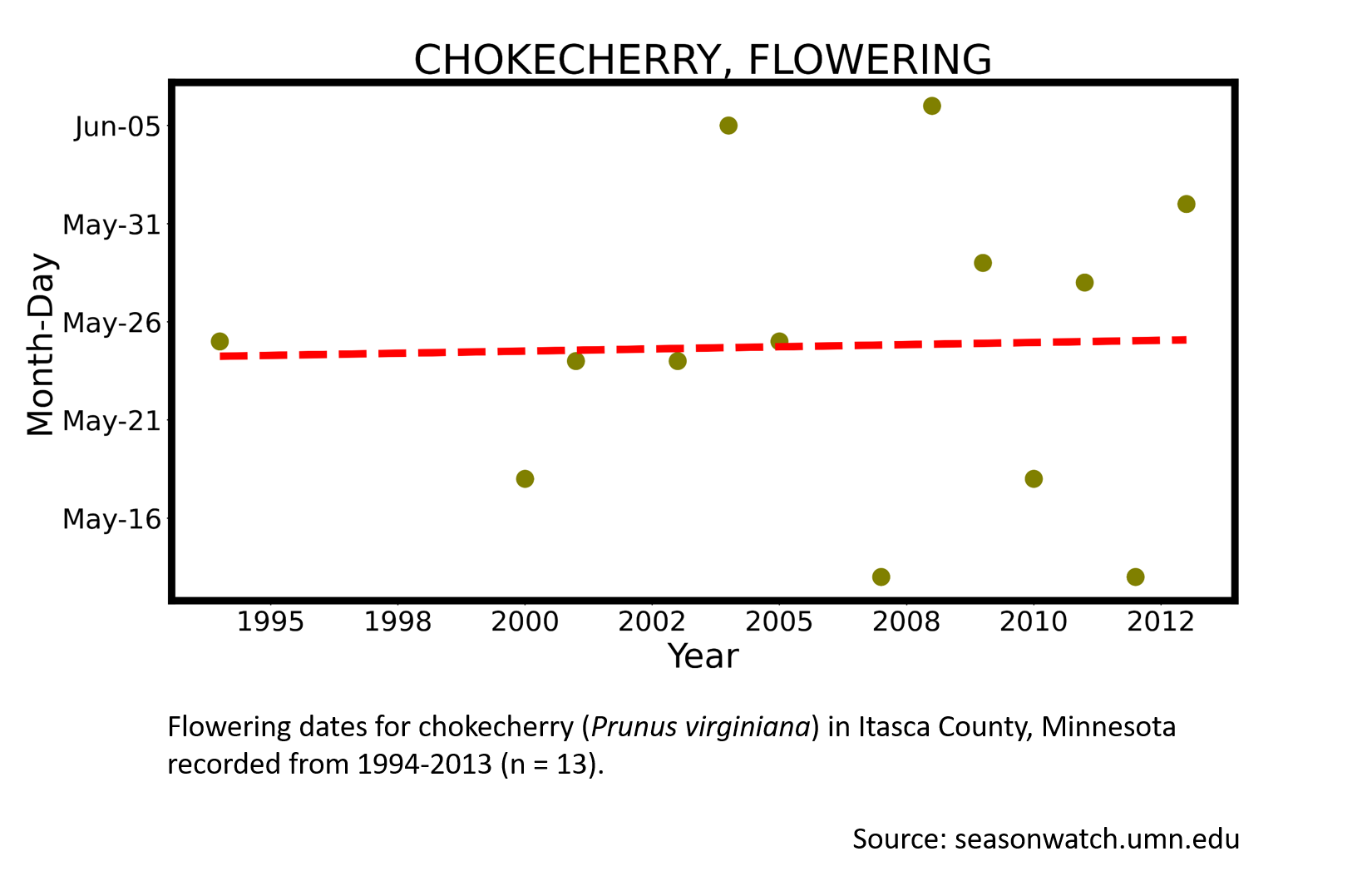
First ripe fruit
- Earliest: July 16 (occurred in 2007)
- Average: August 6
- Latest: September 2 ( occurred in 2008)
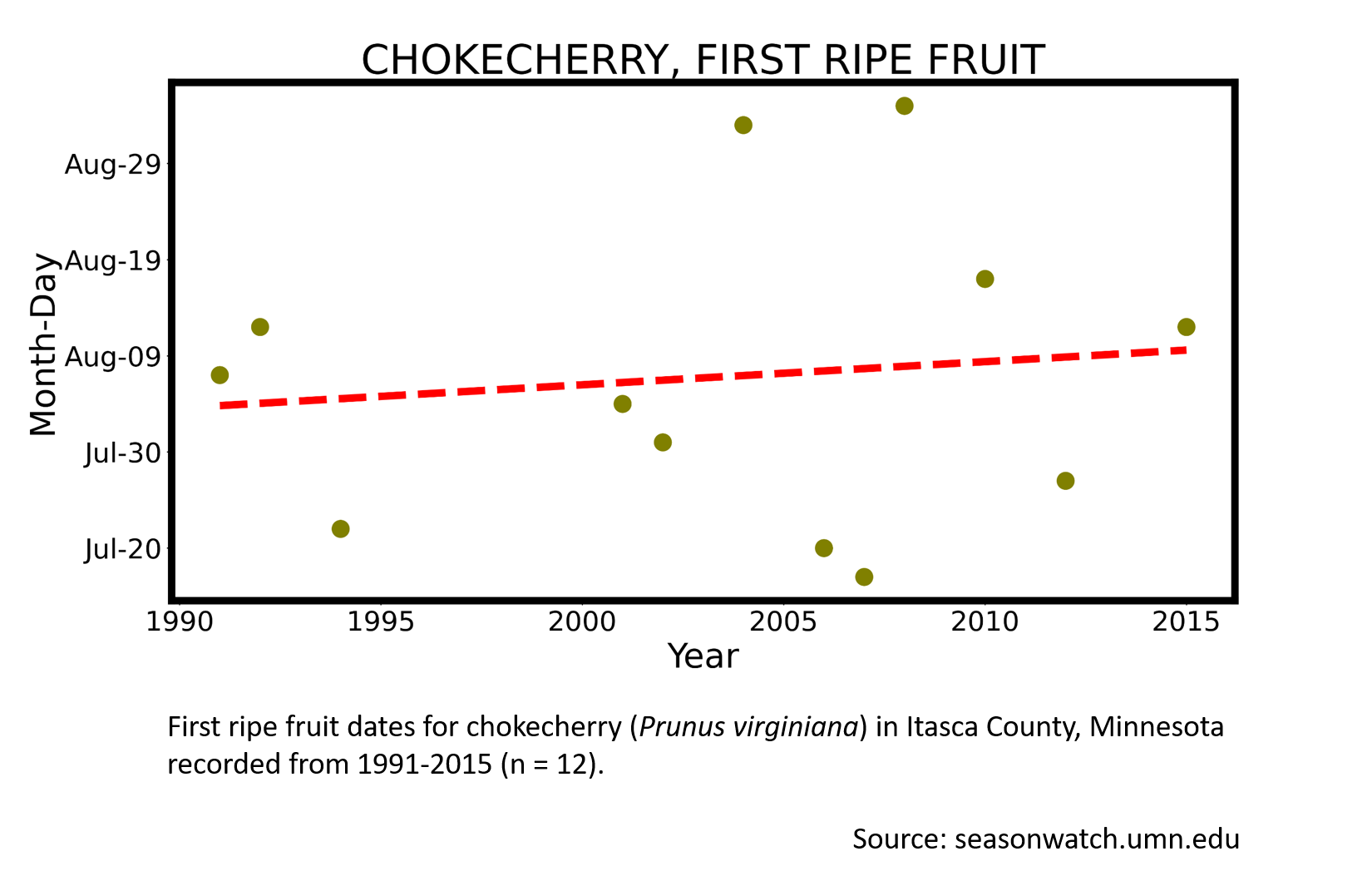
More resources
Keep exploring Season Watch
Keep exploring Season Watch
Co-author: Lynsey Nass, Minnesota Master Naturalist
